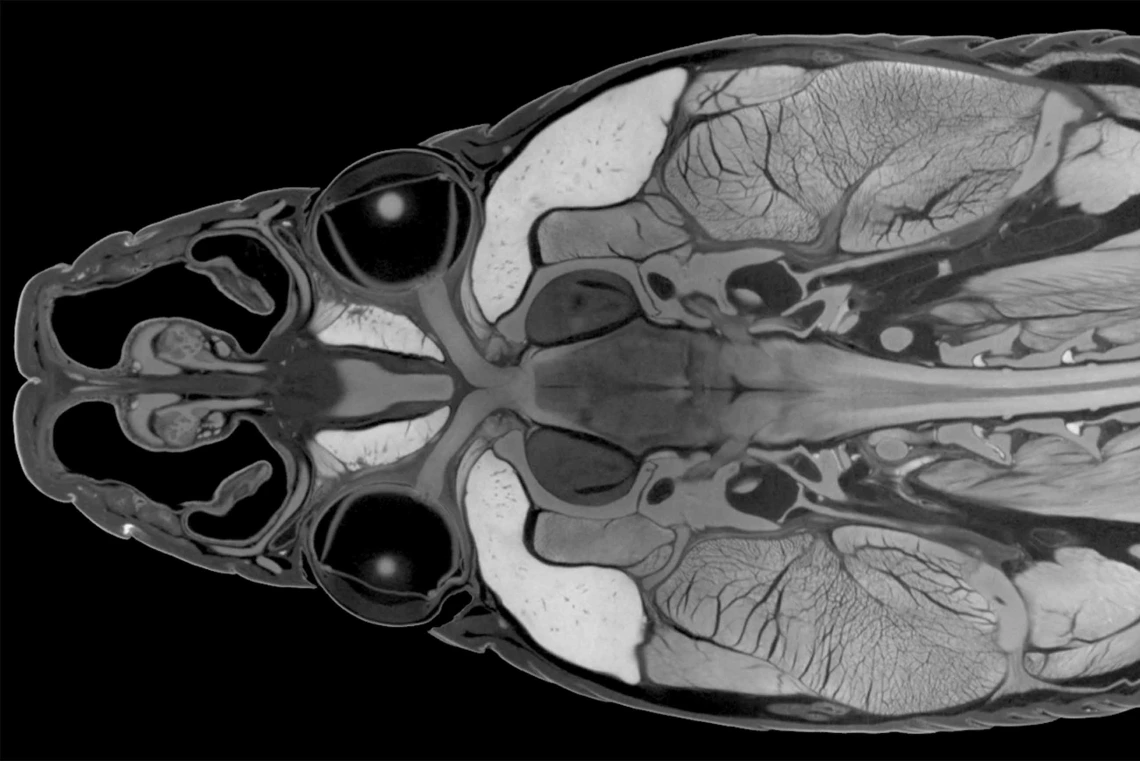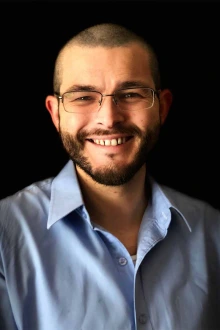UArizona Health Sciences professor uses CT network to promote public access to open science
Researchers are meeting where the science of computed tomography intersects with policies and practices to ensure that publicly funded data collection can be made widely available and understandable by diverse communities.

A CT scan of a snake head is an example of one way to use computed tomography, which is being used by research and education communities, industry, publishers and data repositories across many scientific disciplines.
Image courtesy of Paul Gignac, PhD
Reading about the latest scientific discovery – such as the unearthing of a fossil representing a new species of tiny dinosaur – can be fascinating. But what if it were possible to do more than just read about it? What if you could go online, download a digital model and 3D print an exact replica of that fossil within minutes of reading the news? That is the goal of the Non-Clinical Tomography Users Research Network, or NoCTURN, an international group of researchers spearheaded by the University of Arizona Health Sciences, the American Museum of Natural History, the University of Florida and the University of Texas. They want to open the doors of science and let everyone in.
“There are a lot of datasets available in various research repositories, but there are easily hundreds of thousand more on the hard drives and servers of all of the people who are funded by federal governments to do computed tomography research around the world, so only a small fraction are available to the public,” said Paul Gignac, PhD, who is on the NoCTURN leadership team and is an associate professor of cellular and molecular medicine at the UArizona College of Medicine – Tucson. “We’d like to see that availability expand tenfold as it becomes more commonplace and expected that researchers and imaging facilities share these data in public repositories.”

Paul Gignac, PhD, associate professor of cellular and molecular medicine at the UArizona College of Medicine – Tucson, is a member of the Non-Clinical Tomography Users Research Network leadership team.
Photo courtesy of Paul Gignac, PhD
Computed tomography, commonly referred to as CT scanning in the medical field, has transformed science across many disciplines by allowing for the nondestructive 3D imaging of complex, opaque objects. Whether studying organismal biology, manufacturing techniques, experimental medical devices, engineering structures, geological samples, prehistoric artifacts or fossilized organisms, CT is a core element in science, technology, engineering and mathematics research and outreach toolkits.
Computed tomography’s relative newness as a scientific tool – the first CT scanner is just over 50 years old – and its quick ride to popularity have resulted in a fractured CT landscape.
“There are dozens of manufacturers of high-resolution CT scanners, but few standards between them,” Gignac said. “When I explain how I did a scan to one of my colleagues, we might not even be using the same language because the terminology for the same parameters isn’t identical. I can send my colleague some files, but he or she may not be able to open them with their software because some file types are proprietary. Through NoCTURN, we are trying to smooth out those kinds of interoperability issues.”
NoCTURN, a National Science Foundation Research Coordination Network, is a collaboration of 75 researchers from 42 institutions around the world with the common goal of improving data handling across scientific disciplines. The group was formed in 2022 just as the U.S. Office of Science and Technology Policy released the Nelson Memorandum, which updated policy guidance to promote equity and transparency in research and improve public access to federally funded research results.
NoCTURN members engage with imaging facilities, academic departments and data repositories to encourage data sharing while improving findability, accessibility, interoperability and reuse of digital assets. Additionally, they work with private companies to standardize data acquisition, handling and sharing to better reflect the principles of open science.
“Open science and FAIR principles – findable, accessible, interoperable and reusable – should be the bedrock for science in the 21st century,” Gignac said. “Our goal is to develop practical recommendations that link today’s tomography data with tomorrow’s tomography discoveries. NoCTURN can be a template for other organizations on how to utilize the power of large networks to motivate communities to develop open science policies and practices.”
The development of NoCTURN was detailed in a recent paper by Gignac and colleagues, “The role of networks to overcome large-scale challenges in tomography: The non-clinical tomography users research network,” published in the journal Tomography of Materials and Structures.
NoCTURN is funded in part by the National Science Foundation under Award Nos. OAC-2226184, OAC-2226186 and OAC-2226185.
Contact
Stacy Pigott
UArizona Health Sciences Office of Communications
520-539-4152, spigott@arizona.edu

